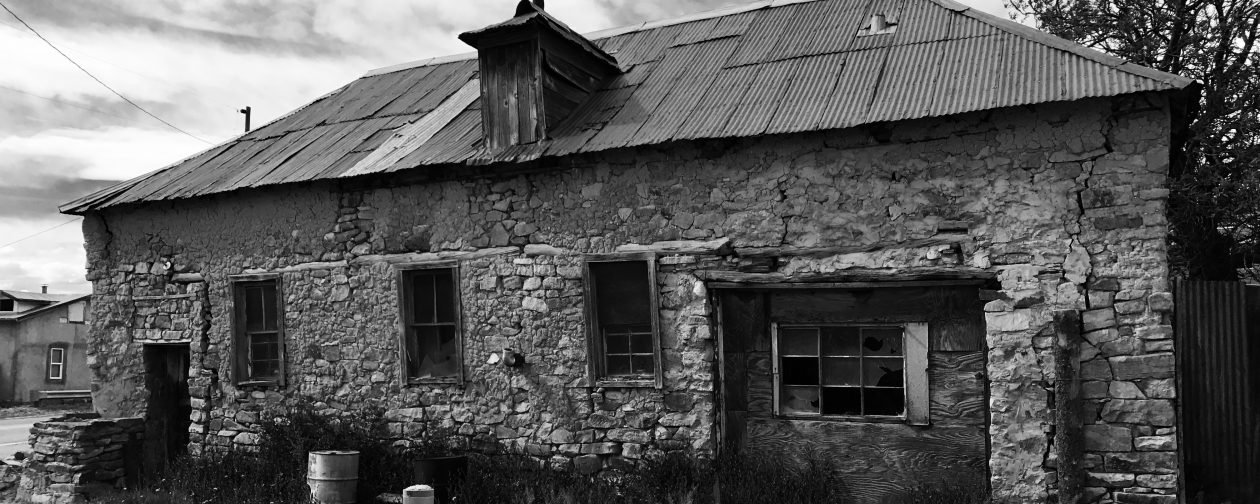[EasyGallery id=’elviandante(thetraveler)’]
From the sfnfsitestewards newsletter 2002–Contributed by Paul and Linda McClendon
As Site Stewards for the Hacienda, also known as
El Viandante, We have been involved in an ongoing
research project into the who, what, when and why
of this site. The Hacienda site is a 75 acre parcel of
land on a larger 26,000 acre tract that became a part
of the public domain in 1939 after it was sold by
original Anton Chico Land Grant to the Gross Kelly
Company in 1930. The Forest Service took over
management of the 26,000 acres in 1947
The improvements on the site include an 8 room,
cut stone house, stone corrals and thousands of feet
of stone walls, along the north bluffs overlooking
the Pecos River between El Cerrito and Tecolotito.
A house this large is very unusual for the area as
typically the little subsistence ranches observed in
the area have only two or three room dwellings.
Our research leads us to believe that the buildings
were probably built in the late 1860s or early 1870s,
as two early books from the 1865 era discuss the
ford on the river where the Hacienda is located but
make mention only of a rancher that lived two miles
away. The oral history investigation gave us the
name of the Jaramillo Family who occupied the site
as a commercial venture. With their oxen, they
assisted wagons in fording the Pecos River. These
wagons were carrying supplies to the traders and
ranches to the south and then bringing wool north
across the river to Las Vegas or the railhead. With
the many corrals we assume that herds of sheep and
then later cattle were also brought across the river at
this location. The northern terminus, at its heyday
from 1880 to about 1902, was probably the Santa
Fe railhead at Bernal and the wagons carried
supplies south as far as Lincoln County. There is a
similar site across the river that was occupied by the
Baca Family, relatives of the Jaramillos, that we
feel was part of the overall picture. Some
speculation has been given to use by the
Comancheros during their later period but there is
no good evidence to support this thought.
An interesting sidelight, three different sources all
told us about the “ladies of the evening” that were
at the Hacienda to entertain the wagoneers. From
nearby old-timers, we learned that the site was
abandoned prior to the mid 1930s.
There have been four PIT projects for this site, the
first for historical research and the last three out at
the site doing stabilization and some archeological
“digging”. While we are blessed with an abundance
of surface litter, due to funding, forest fires and
time constraints, little has been done in the way of
identifying or dating the bulk of the artifacts
collected. What we have done so far though, does
support the time frame that was established through
the historical research.
Sadly, we have not been able to locate any
descendants of either the Jaramillo or Baca families
that were connected with the site but maybe
sometime……someone……. somewhere
